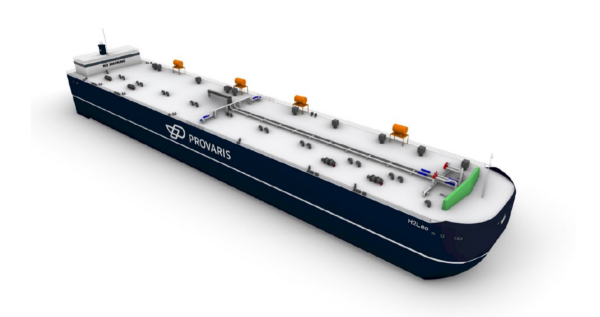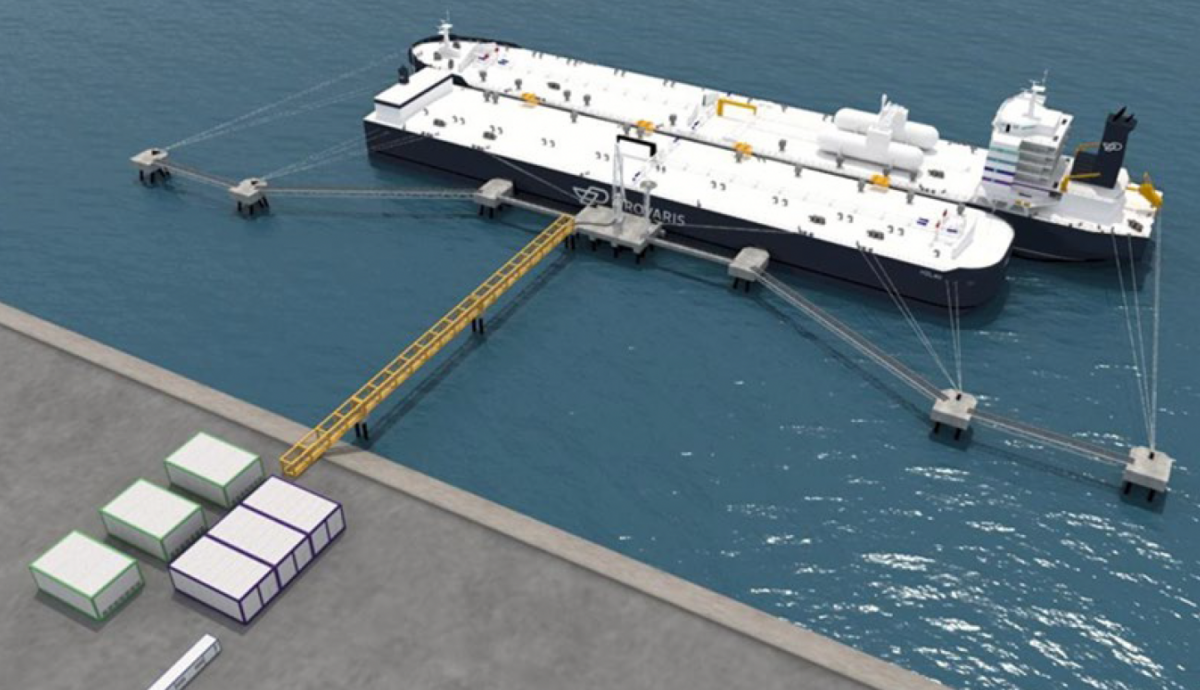Dubbed the H2Leo, the design leverages the company’s work developing a compressed hydrogen carrier ship – reworking the primary purpose as storage rather than transport.
The company is targeting a USD 200,000 – 30,000 million per tonne ($300,00 – $450,000) capital cost for its H2Leo, saying this makes it “significantly cheaper than onshore solutions.”
Hydrogen storage has long been a sore spot for the industry since hydrogen molecules are notoriously difficult to contain, and converting it to bigger ammonia molecules can be resource intensive.

Image: Provaris
Provaris says its H2Neo has a design capacity range of 300 to 600 tonnes of hydrogen, expandable to up to 2,000 tonnes. The company envisions the H2Leo being used for intermittent or buffer storage for green hydrogen production, long-duration storage for excess renewable energy, and bunkering for the maritime sector.
Provaris, formerly known as Global Energy Ventures, had its compressed hydrogen carrier vessel, the H2Neo, verified and approved by the American Bureau of Shipping in December 2022. Alongside this, the company has been developing the 2.8 GW solar-powered green hydrogen production project on the Tiwi Islands in the Northern Territory.
“Provaris sees the development of a floating storage solution as a natural extension of its compressed hydrogen IP [intellectual property], providing an alternative to current high-cost bulk-scale storage solutions and improving the economics of its existing projects,” Provaris Managing Director & CEO, Martin Carolan, said. “We believe a floating storage solution will complement our pipeline of hydrogen production and transport projects and decrease timelines to first revenues and IP commercialisation.”
The H2Leo floating will have two cargo tanks with independent isolation, safety valves, and manifolds for compressed hydrogen transfer, the company said. Simultaneous operations capability will allow for continuous production and discharge, it added.
The development of H2Leo design will run parallel to the remaining engineering and approvals for Provaris’ hydrogen carrier, the H2Neo. It is targeting prototype testing and final class approval for that later this year, with Provaris previously saying it will get H2Neo to construction-ready status in 2023, with a bigger green compressed hydrogen carrier to follow in 2026.
H2Leo set to become available in 2025.
This content is protected by copyright and may not be reused. If you want to cooperate with us and would like to reuse some of our content, please contact: editors@pv-magazine.com.









By submitting this form you agree to pv magazine using your data for the purposes of publishing your comment.
Your personal data will only be disclosed or otherwise transmitted to third parties for the purposes of spam filtering or if this is necessary for technical maintenance of the website. Any other transfer to third parties will not take place unless this is justified on the basis of applicable data protection regulations or if pv magazine is legally obliged to do so.
You may revoke this consent at any time with effect for the future, in which case your personal data will be deleted immediately. Otherwise, your data will be deleted if pv magazine has processed your request or the purpose of data storage is fulfilled.
Further information on data privacy can be found in our Data Protection Policy.